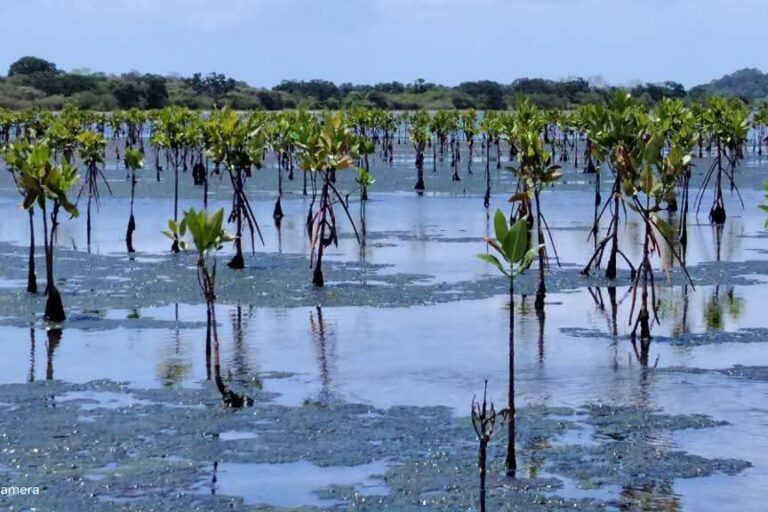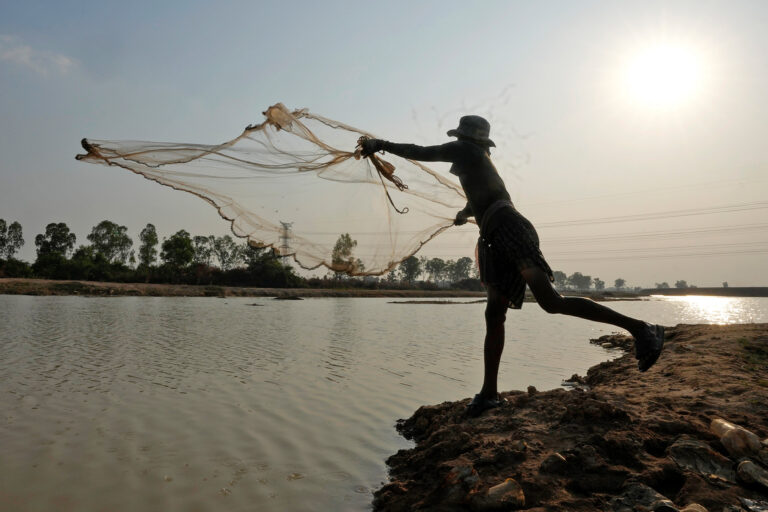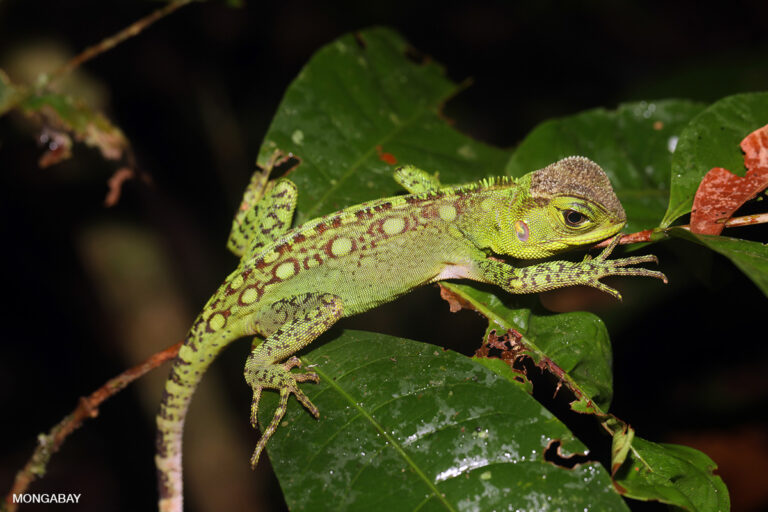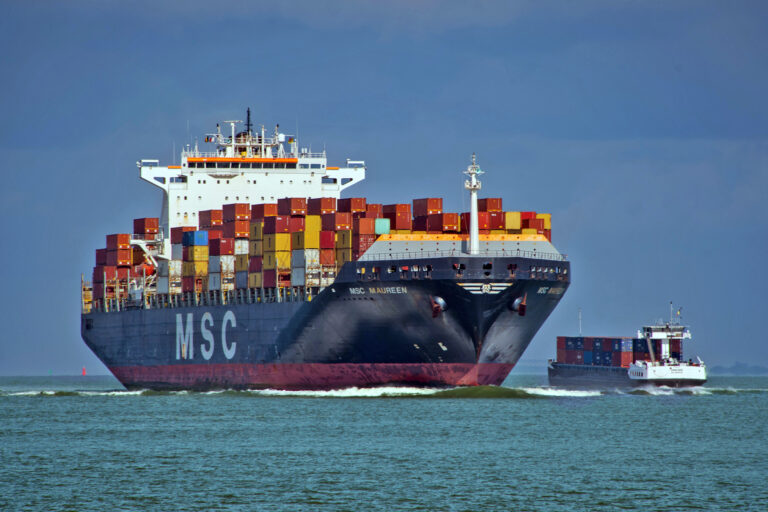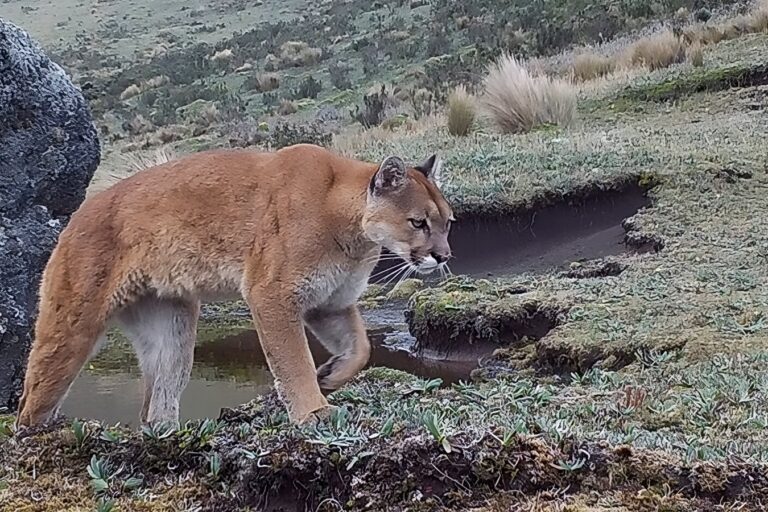- Scientists determine how climate change affects forests by monitoring how carbon cycles through trees.
- Airplane surveys show that when trees in the western Amazon lose their branches, they release almost as much carbon dioxide into the atmosphere as when trees die.
- Branchfall is now an important factor in accounting for how carbon moves in and out of forests.
Amazon forests conjure visions of lush canopies, not giant branches crashing to the ground. But according to a recent study, published in Environmental Research Letters, dead branches frequently fall from the tops of trees in the Amazon, releasing a startling amount of carbon dioxide into the atmosphere.
This release is comparable to the amount of carbon lost when entire trees die, which surprised authors David Marvin and Greg Asner from the Carnegie Institution for Science in Stanford, California. The researchers, who study carbon dioxide to determine forest health, thought falling branches would not significantly affect the levels of carbon dioxide returning to the atmosphere from forests.


Trees act like carbon dioxide sponges, slurping it up and converting it to wood as they grow. When they die, the wood breaks down, and carbon dioxide flows back into the atmosphere. Scientists are keen to measure this cycle over time because it will help them monitor how droughts, storms, and climate change affect forests, especially threatened rainforest habitats.
Ecologists measure carbon cycles by first determining the carbon “standing stock,” or the amount of carbon stored in living trees. They make plots on the ground about 10 hectares in size, count the number of trees, and scale up to estimate the standing stock for a forest. Then they update that number over time as trees die and new trees sprout.
Until now, no one had determined whether branchfall would alter the carbon cycle.
“How do you measure the branches that fall off trees? It’s like measuring the teeth that fall out of the mouth of a whale,” said Asner. “You can’t do it.”

Marvin and Asner developed a novel approach to look at branchfall—surveying huge patches of forests from the Carnegie Airborne Observatory, a plane with a lab inside. Soaring over the Amazon, they scanned the forest below with lasers, painting a three-dimensional picture of the forest. Marvin and Asner scanned 12 regions in Peru and Colombia totaling more than 100,000 hectares. To compare branchfall and tree death, they flew over each region twice, once in 2011 and then again one or two years later.
Because falling branches or dead trees leave large holes in the canopy, Marvin and Asner looked for gaps emerging in their images. Smaller gaps showed where branches had fallen; larger gaps marked places where dead trees had fallen over. Then they converted these gaps to a measure of carbon release per hectare per year for each site. On average, falling branches in one hectare released 0.65 tons of carbon back into the atmosphere each year. Dying trees, they found, released 0.72 tons of carbon per year.

“These are big numbers,” said Jeffrey Chambers, a climate change scientist at the Lawrence Berkeley National Laboratory in Berkeley, California, who was not involved with the study.
Chambers wonders why the carbon lost through tree death seems lower than the number predicted by field studies. Asner and Marvin note that they didn’t count trees that had died but had not yet fallen down, which might explain the discrepancy. Their next step is to head to the forest floor to confirm their findings through direct measurements.
The scientists found that while tree death varied across their study sites, branchfall was consistently high regardless of location. This makes sense because all trees lose branches over their lifetimes, according to Asner.
“Branchfall is literally the same as combing your hair and getting some hair in your comb,” he said. Sun and wind are the main culprits, he added: “All of that wears these tissues out.”
Citation:
Marvin, D. C., & Asner, G. P. (2016). Branchfall dominates annual carbon flux across lowland Amazonian forests. Environmental Research Letters, 11(9), doi: 10.1088/1748-9326/11/9/094027.
Sarah McQuate is a graduate student in the Science Communication Program at the University of California, Santa Cruz. Other Mongabay stories produced by UCSC students can be found here







